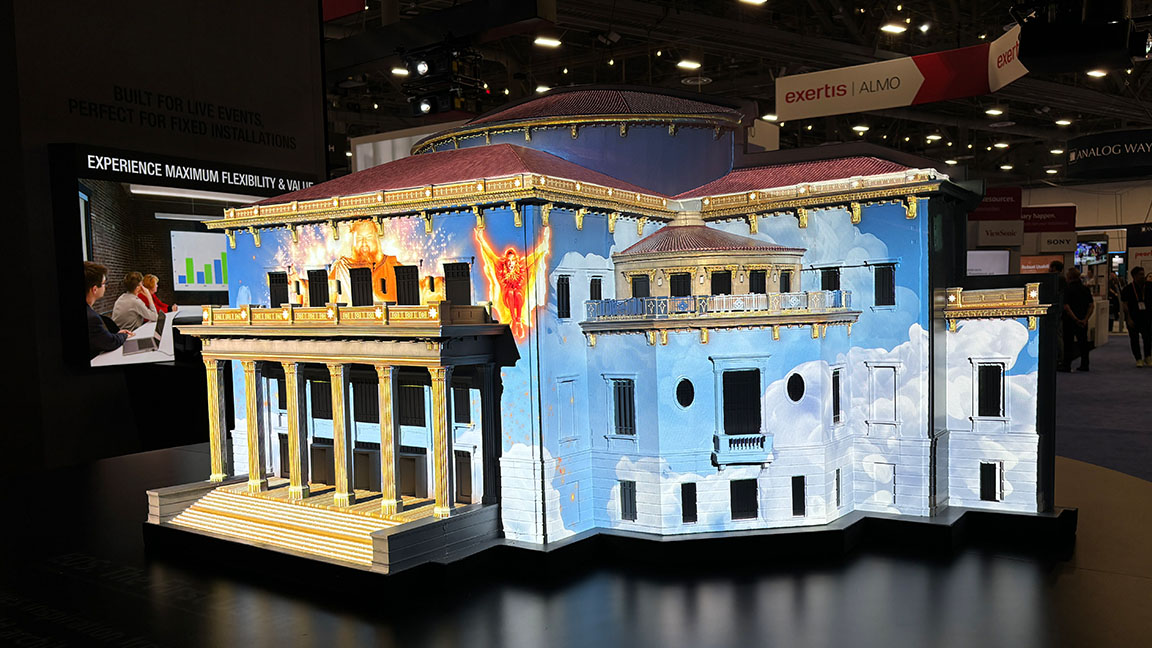Another InfoComm is in the books, and it was filled to the brim with shiny new toys, new exhibitors, and a massive number of attendees enjoying Pro AV's latest solutions.
According to AVIXA, the association that produces InfoComm, the show attracted 30,271 verified attendees from 125 countries. Both numbers were post-pandemic records for the show. AVIXA also reported 71% of non-exhibitor attendees were from the Pro AV channel (29% were end users), and international attendees were almost one-quarter of total attendance (23%). There were also 833 exhibitors across the Central and West Halls (as well as in demo rooms in parts of the North Hall not currently under renovation) of the Las Vegas Convention Center.
Now that the industry has returned from its biennial Vegas road trip, there's a lot to unpack. Here are a handful of talking points—ranging from technology trends to world-class venues—from InfoComm 2024.
[INFOCOMM AWARDS: Installation Product Awards Winners | Best of Show]
1) AI is everywhere.
We have previously discussed that artificial intelligence has become almost ordinary in some product areas. AI is here and Pro AV is embracing it, but instead of just showing what we can do with it today, InfoComm provided a platform for the industry to discuss where the technology is headed.
Discussions started right off the bat, as QSC | Q-SYS CEO Joe Pham looked to the future of AV and AI in his opening keynote, “Everything Has Changed: AV’s Infinite Potential in an Exponential Age.” There was also talk about AI in digital signage —not only implementing AI but understanding how to use the data and information it provides to enhance digital signage.
And perhaps you met AVA on the InfoComm app. The new Ask AVA virtual assistant, conveniently positioned on the landing page, provided a comprehensive guide to the show floor. AVA AI is the brainchild of AVIXA, and Wayne Cavadi sat down with Kapil Kher, AVIXA’s SVP of IT, to learn more about the homegrown AI tool.
2) Esports is scoring high for Pro AV.
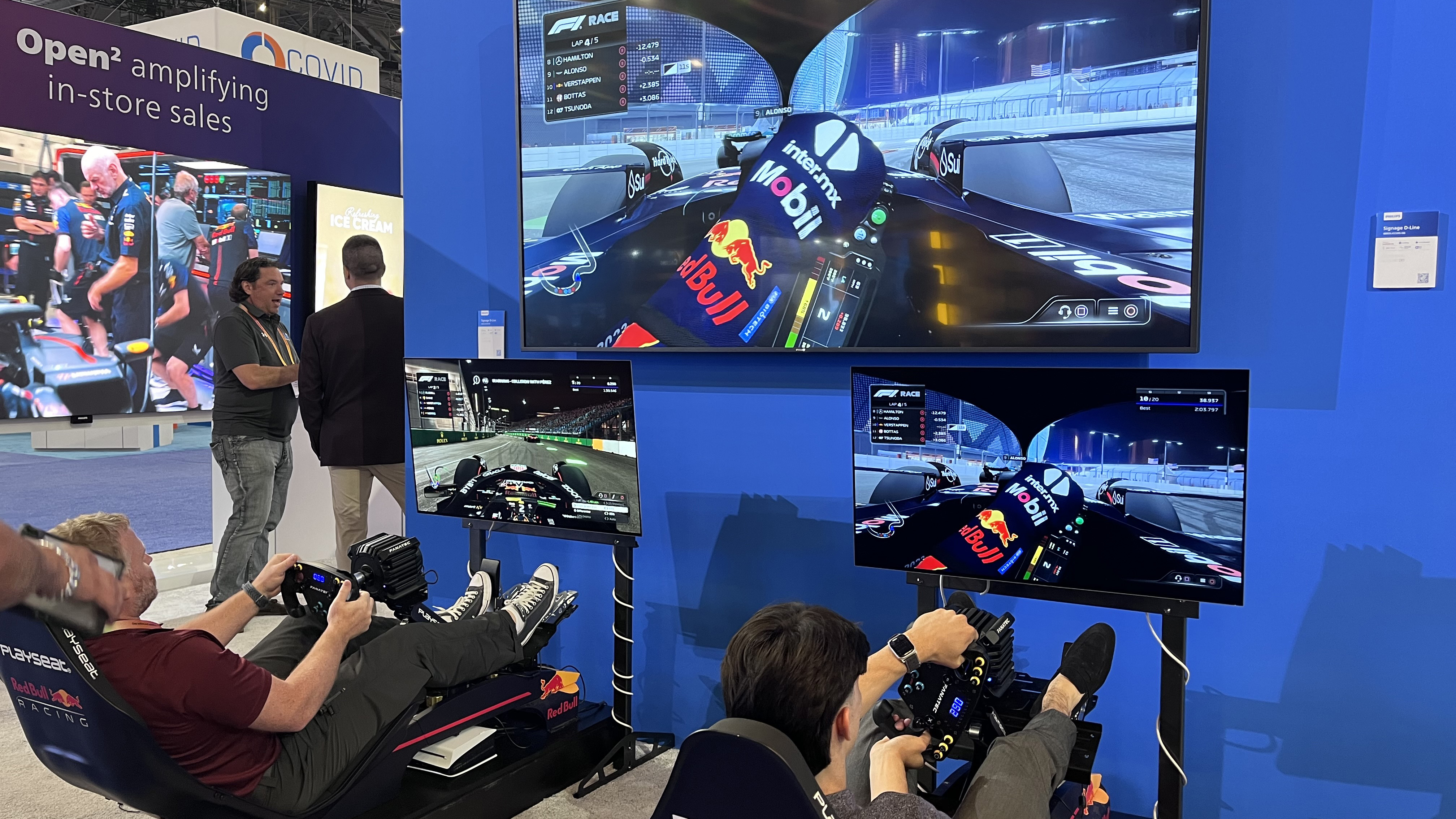
Currently, the news is mixed at best for esports. In May 2023, the New York Times reported League Championships Series viewership dropped significantly in 2022 and 2023, which has resulted in reduced advertising support, and professional leagues have struggled to turn a profit. Yet, according to Statista, the U.S. esports market will generate more than $1 billion in revenue this year, with an annual growth rate of more than 14%. And none of these numbers represent the growing esports presence on college campuses or K-12.
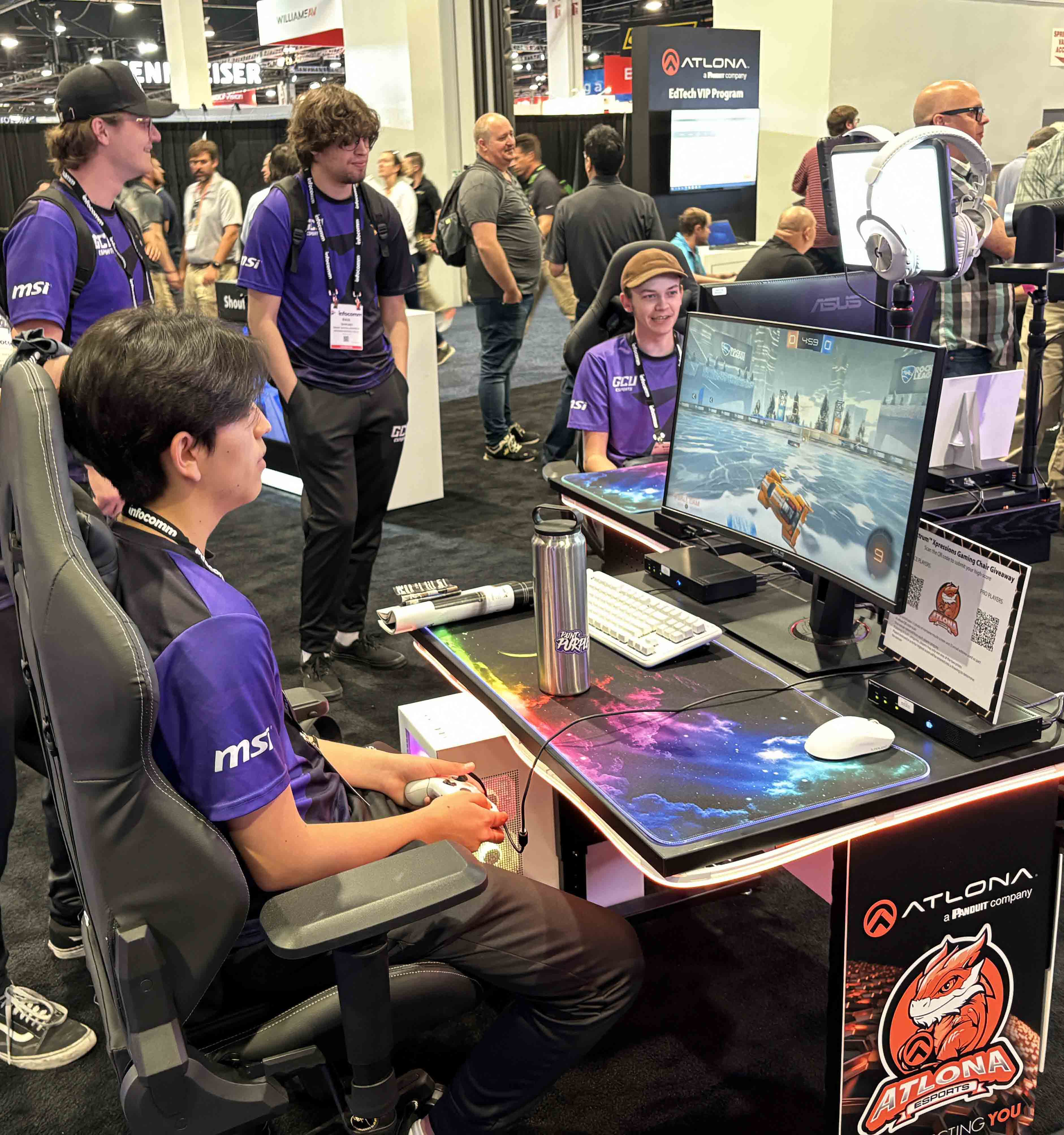
While professional teams and leagues try to figure out a bankable business model, manufacturers and integrators continue to develop solutions for better esports competitions and presentations. Atlona showcased some possibilities at its booth, with four zones—coach's station, shoutcaster station, gaming zone, and spectator video wall—replicating an esports environment.
The company used the setup to demonstrate its OmniStream AV-over-IP and Velocity control systems, which addressed the need for ultra-fast switching, multiview processing, touchscreen control, and more for live gaming environments. The video wall in the booth was supplied by Just Video Walls.
Of course, what fun is showcasing esports solutions without some competition? InfoComm Esports Live 2.0 returned for a second year, allowing attendees to experience esports with live match play competitions, presentations and technologies, event coverage from the Shoutcast Stage, and a look at the production behind esports. Elsewhere, PPDS (pictured above) and Draper were among a few that had racecar simulators, bringing the high-speed experience to the show floor.
3) The broadcast convergence continues.
The crossover between broadcast and Pro AV is getting more significant, and it's time for integrators to make sure they are up to speed. For example, Jesse Foster, VP of products and western sales for MultiDyne, said that corporate enterprise customers have been increasing the sophistication of their internally produced media communications, which has inevitably resulted in the adoption of established and emerging broadcast quality workflows and equipment.
"In one of MultiDyne’s use cases, SilverBack Fiber Camera Adapter products adapt the latest camera technology from vendors like Sony and ARRI into the broadcast workflow," Foster explained. "The workflow provides SMPTE standard-compliant signals such as 12G-SDI, which can carry 4K 60fps video with 16 high-quality audio channels over a single cable. Traditional AV industry products and technologies such as HDMI and HDBaseT don’t offer the same feature set or ease of use that refined broadcast caliber products do, so the use of these tools will continue to proliferate."
[5 Sentiments from NAB Show 2024]
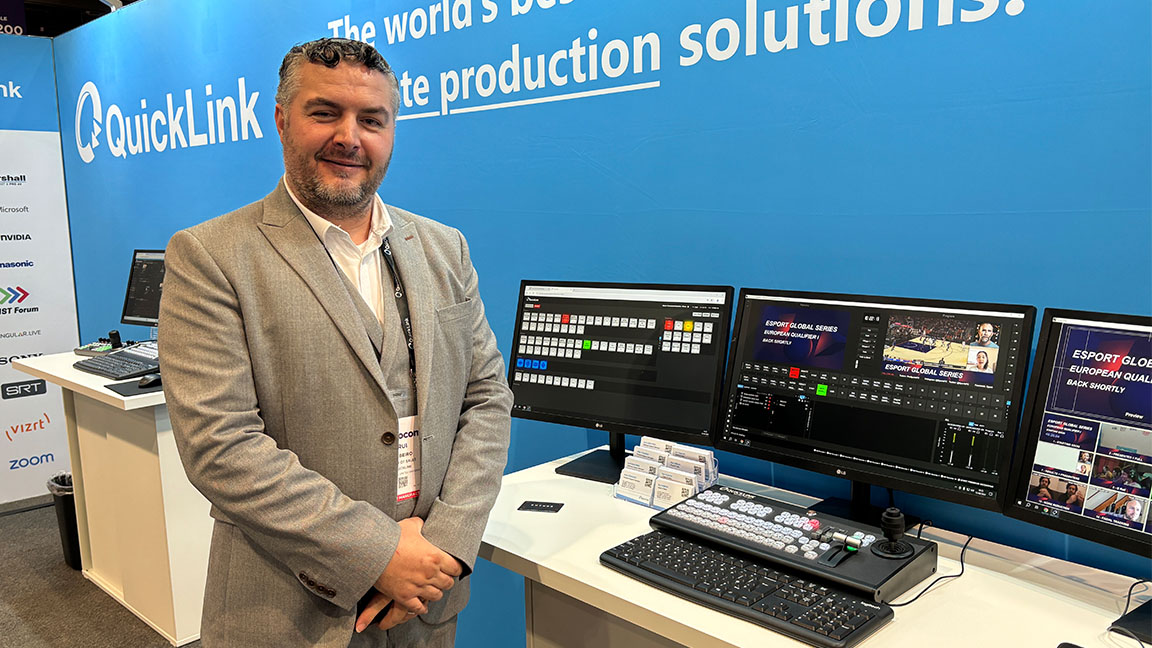
Perhaps one of the best examples of convergence is QuickLink, a live production company known for its broadcast solutions that exhibited at InfoComm for the first time this year. QuickLink's Rui Ribeiro said the corporate world has recognized the need to create content for internal and external viewers. However, those businesses also recognize the need to increase production qualities while keeping the actual productions simple.
To that end, the company demonstrated its StudioPro 4K video production platform, which simplifies operation by treating scenes like PowerPoint slides (with layers for video, graphics, and effects) and has and seamless integration with videoconferencing platforms. The result is a user-friendly interface designed to appeal to corporate, education, government, and house of worship markets.
"There's a lot more communications outwardly to either customers or internal audiences," added Matt Morgan, business development manager, corporate, Ross Video. "Corporate communications has become very important. People want more control now." That control can be seen in more polished productions and messaging, and Morgan said the technology to create better content is within reach economically for corporate AV. Watch the complete interview with Morgan below.
4) Projection mapping is still very cool.
Recent AVIXA research indicates that video projection is expected to lose market share, dropping about 1% of revenue over the next five years. Of course, projectors should be a $16 billion part of the industry in 2024, so they aren't exactly on life support. In fact, projection mapping applications continue to breathe new life into this established market segment.
Projection mapping not only allows spectators to look at stunning visuals, but it can also bring them into stunning visuals. On Day 1 of InfoComm, we highlighted five booths, one of which saw Christie team up with THEORIZ and Augmenta for an awe-inspiring experience. Christie 4K13-HS 1DLP projectors and its Pandoras Box software brought visitors into different worlds, like a lava river or bubble world, all while remaining in the LVCC. Plus, tracking technology made water and lava move with the visitors as they walked across the floor or wiped their hands across the wall.
Christie also had a more subtle projection display, a unique collaboration between Gabriel Schama Studios and Limelight Art. A Christie HS Series laser projector was used to map images onto "Cathedral of Thieves,” an intricate sculpture that features 13 layers of laser-cut wood.
We have covered some of Panasonic Connect's latest work on illumination festivals, all of which use its projectors to turn historic buildings into canvases for local artists. Panasonic Connect brought a miniature version to InfoComm and lit up the show for attendees.
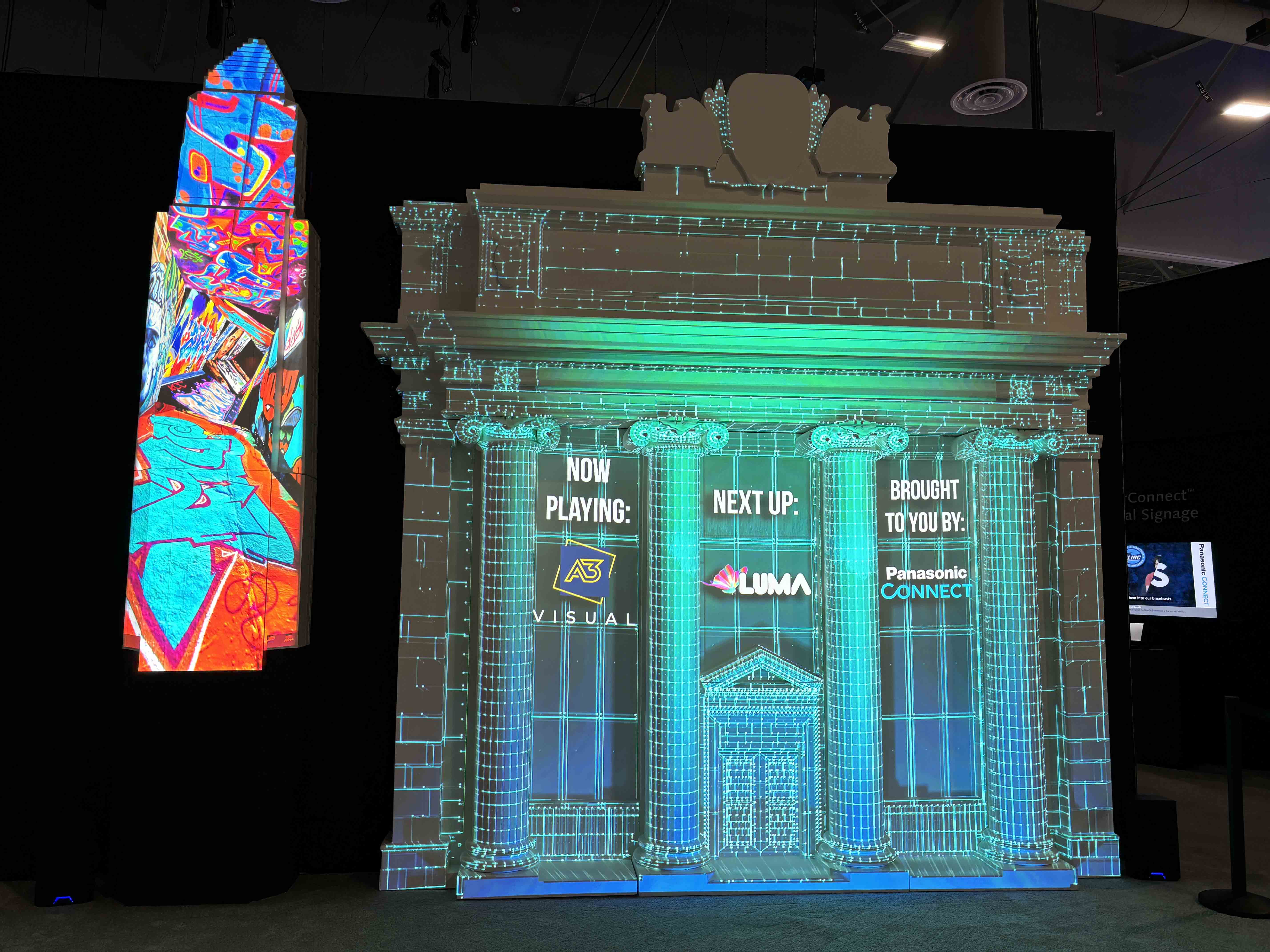
And Epson had its own mini-mapping display, with a recreation of the Carter Green Palladium, a concert hall in Carmel, IN (pictured at the top of this article). The actual projection system is powered by 12 Epson EB-PU2220B projectors housed in Tempest Cyclone outdoor projector enclosures and controlled via MapMapper software.
5) Vegas Sphere is the real deal.
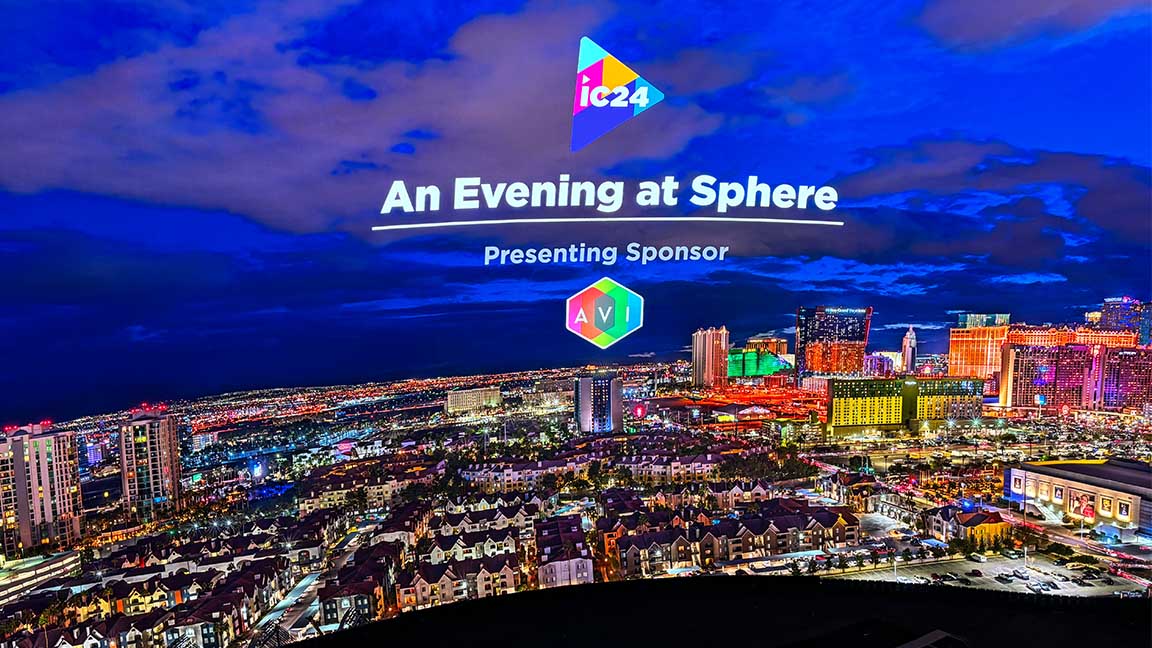
On June 11, the day before the exhibit hall opened, InfoComm and presenting sponsor AVI Systems welcomed more than 2,600 members of the Pro AV community to "An Evening at Sphere." The event included access to the venue's interactive experiences as well as a seat for "Postcard from Earth," a 50-minute motion picture designed to showcase the AV technologies SCN has been reporting on for more than a year.
So, did the Vegas Sphere live up to the hype? From Mark, who attended the event: Absolutely. I thought was a great way to kick off InfoComm 2024. Granted, the barely-there plot of the film won't exactly dazzle you, but the evening was about the experience, not the story. The imagery is nothing short of spectacular and the audio might even be better. Which makes you wonder if it's a good spot for a concert ...
Wayne, who previously detailed his January visit in January to see "Postcard from Earth," went back later in the week to see Dead and Company: You can read all about it here, but let me give you my quick takeaway: If your favorite band is playing in the Vegas Sphere, drop what you're doing and go see them. If your favorite band is not playing in the Vegas Sphere, stop what you're doing and go see someone. I don't like to use words that are thrown around too loosely in journalistic efforts, but the Sphere has revolutionized the concert-going experience.
